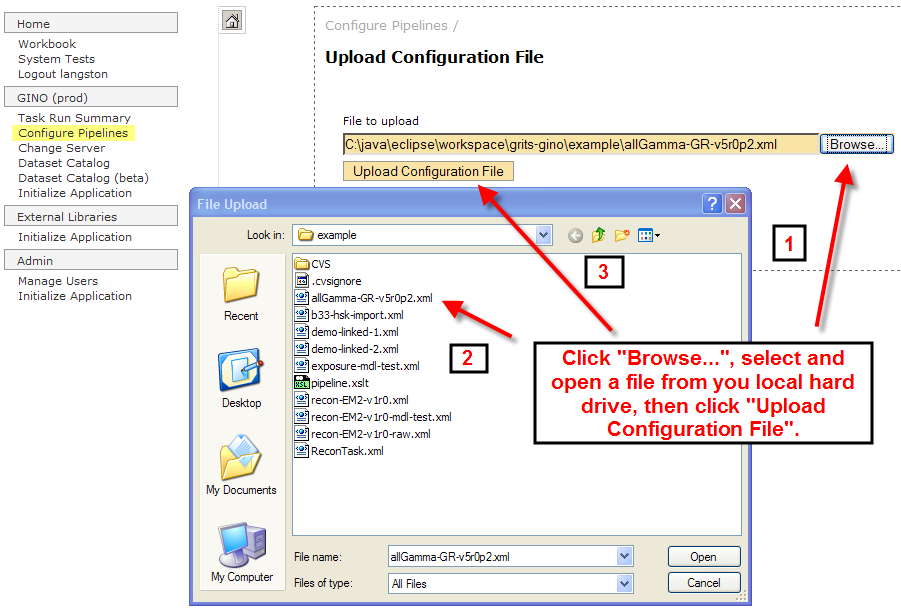...
- Click "Browse...". A file dialog box will open.
- Select your pipeline XML configuration file from your local hard drive. In the screenshot below, select the file in the file dialog box, then click "Open" which will fill the "File to upload" text box with the path to your pipeline XML configuraiton file.
- Click "Upload Configuration File"
If your upload worked (meaning your XML was well formed and it followed the XSD schema listed below), you will be taken back to the "Configure a Pipeline" screen where your pipeline will now appear in the table alongside the other pipelines for the currently selected server. If your upload didn't work you will see an error message in your browser that is probably incomprehensible. Find ~mattlangston and I will help you determine what the problem is.
How to Define a Pipeline
A GINO Pipeline is defined in an XML file whose format is described by a W3C XML Schema available at http://glast-ground.slac.stanford.edu/pipeline/pipeline.xsd. This schema will mainly be useful if you use an XML editor that supports W3C XML Schema, which these days includes nearly all modern XML editors. XML Spy is a good choice that we have experience with. However, most pipelines will be easy to configure with a simple text editor (emacs for example).
...
